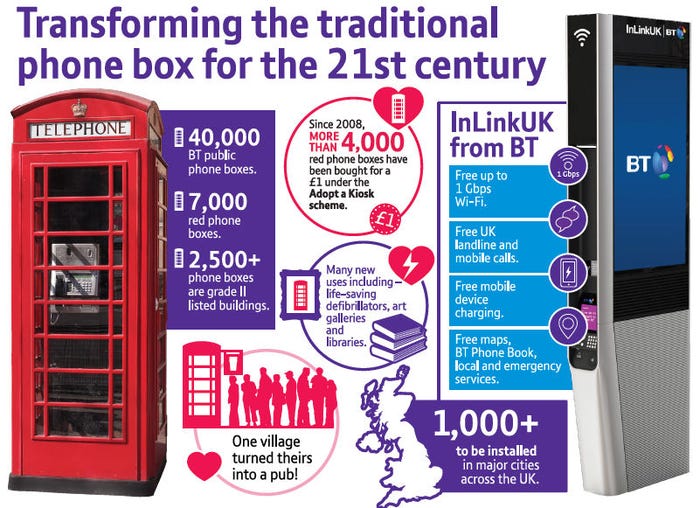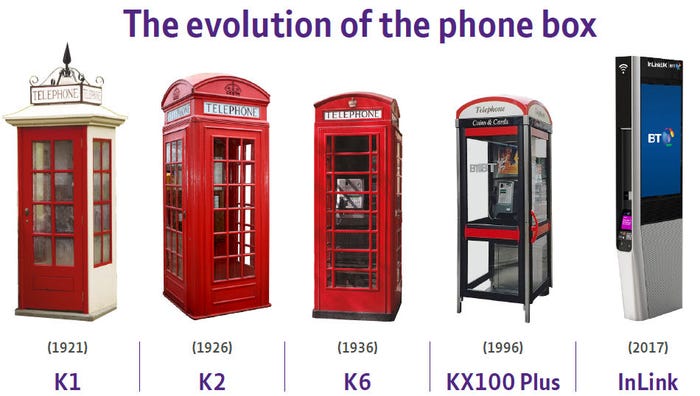BT tries to reinvent the phone boxBT tries to reinvent the phone box
Former UK telecoms monopoly BT has decided it’s time to bring back the phone box in the form of the new InLink public wifi hubs.
June 27, 2017

Former UK telecoms monopoly BT has decided it’s time to bring back the phone box in the form of the new InLink public wifi hubs.
There can be few objects more symptomatic of the rapid evolution of the telecoms industry than the classic red telephone box. Until recently it was a ubiquitous piece of UK street furniture but now that everyone has a mobile phone those few remaining seem to serve either as impromptu public toilets or as advertising hoardings for the sex trade – often both.
BT’s bright idea is borrowed from a similar scheme in New York, which used the free public wifi to create a captive audience for digital advertising. The InLink is therefore brought to market in partnership with Intersection, which did LinkNYC, and UK outdoor advertising company Primesight.
Apart from the free (up to 1 Gbps) wifi and the digital billboard the InLink unit also offers free UK calls, mobile device charging, access to local services, and a new BT Phone Book app that allows users to search for businesses by type and name, as well as people by name. The first of these have already appeared on Camden High Street.
“InLinks introduce the technology we need to create a better urban environment,” said Matt Bird, GM of InLinkUK. “InLinks in the future will feature sensors to capture real-time environmental data, such as pollution and traffic conditions, never seen before in the UK at such a micro level.
“InLinks’ free connectivity and essential digital services will create connected corridors throughout the city to connect businesses to customers, residents to local services and visitors to a new part of London.”
“As we’ve seen in New York City with LinkNYC, providing free high-speed wifi access, real-time information, engaging content, and digital services on city streets can valuably enrich people’s experiences of a city on their daily journeys between home, work, shopping, and entertainment,” said Ari Buchalter, CEO of Intersection. “It also provides unique opportunities for brands to deliver truly relevant advertising in the context of those real-world experiences.”
What Buchalter failed to mention was that many of the New York kiosks seem to have been hijacked by junkies and vagrants intent on streaming loud music and pornography to the exclusion of all other users. With that in mind it was brave of BT to pilot the scheme in Camden Town and it will be interesting to see if Londoners are as depraved as New Yorkers when given the opportunity. Here are a couple of BT graphics, one of which shows just how good an innings the red phone box had.


About the Author
You May Also Like










.png?width=300&auto=webp&quality=80&disable=upscale)


_1.jpg?width=300&auto=webp&quality=80&disable=upscale)